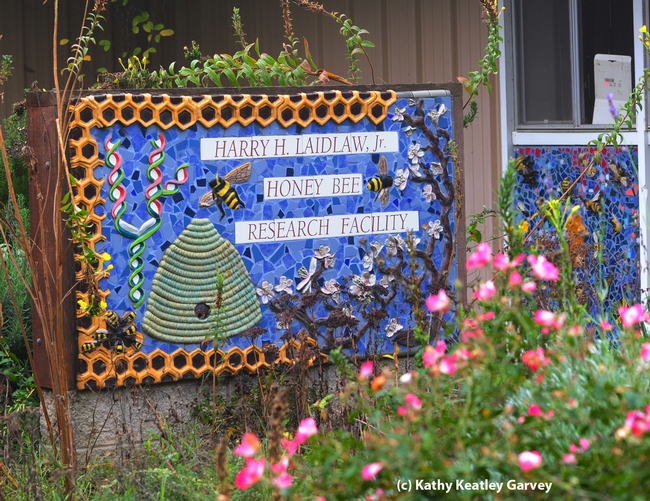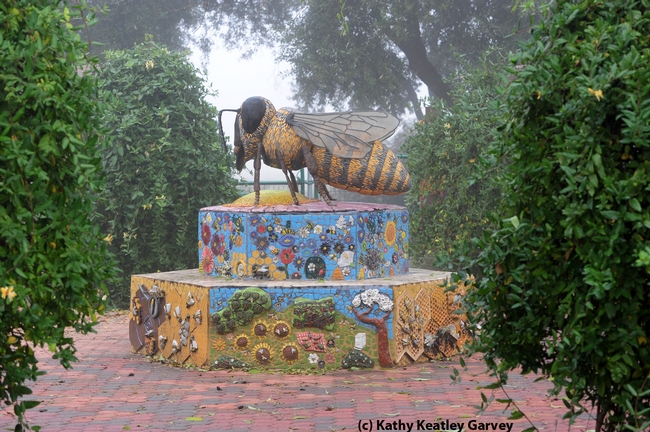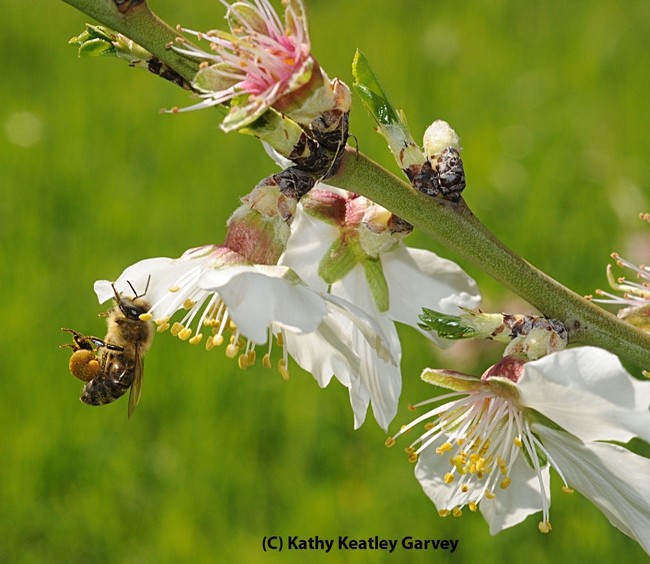It's the Big 4-0 for the Almond Board of California's annual almond industry conference this week.
Some 1000 convention-goers are gathering in the Sacramento Convention Center. The 40th annual conference opened Tuesday, Dec. 11 and runs through Thursday, Dec. 13.
A contingent from the Department of Entomology at the University of California, Davis, is there--including some from chemical ecologist Walter Leal's lab and some from the Harry H. Laidlaw Jr. Honey Bee Research Facility.
Many came to hear U.S. Secretary of Agriculture Tom Vilsack.
After all, almonds are California's biggest export. With some 750,000 acres of almonds in production in the state, the National Agricultural Statistics Service is forecasting a record-breaking 2.10 billion meat pounds this year, valued at approximately $3 billion. Eighty-percent of the global supply of almonds is grown in California, and about 70 percent of California’s crop is marketed overseas.
Over at the Laidlaw facility, you can't help but notice the sign that graces the entrance. The work of self-described "rock artist" Donna Billick of Davis, it shows a skep, honey bees, DNA strands, and almond blossoms.
Then if you walk a few steps east of the facility to the Häagen-Dazs Honey Bee Haven, you'll run into the gigantic worker bee sculpture, also the work of Donna Billick. It's a six-foot-long morphologically correct worker bee, right down to the wax glands.
If it appears to be on a pedestal, that's the way it should be. Honey bees, those tiny agricultural workers, pollinate one-third of the food we eat.
As for the almonds, the pollination season begins around Valentine's Day. The orchards will be buzzing. It takes two hives per acre to pollinate California's almond crop.
Attached Images:

Sign at the entrance to the Harry H. Laidlaw Jr. Honey Bee Research Facility at UC Davis depicts honey bees, a skep, DNA and almond blossoms. It is the work of Donna Billick of Davis (Photo by Kathy Keatley Garvey)

Fog shrouds the bee sculpture in the Haagen-Dazs Honey Bee Haven. It is the work of Donna Billick of Davis. (Photo by Kathy Keatley Garvey)

Bee working an almond blossom. She's packing her pollen load. (Photo by Kathy Keatley Garvey)